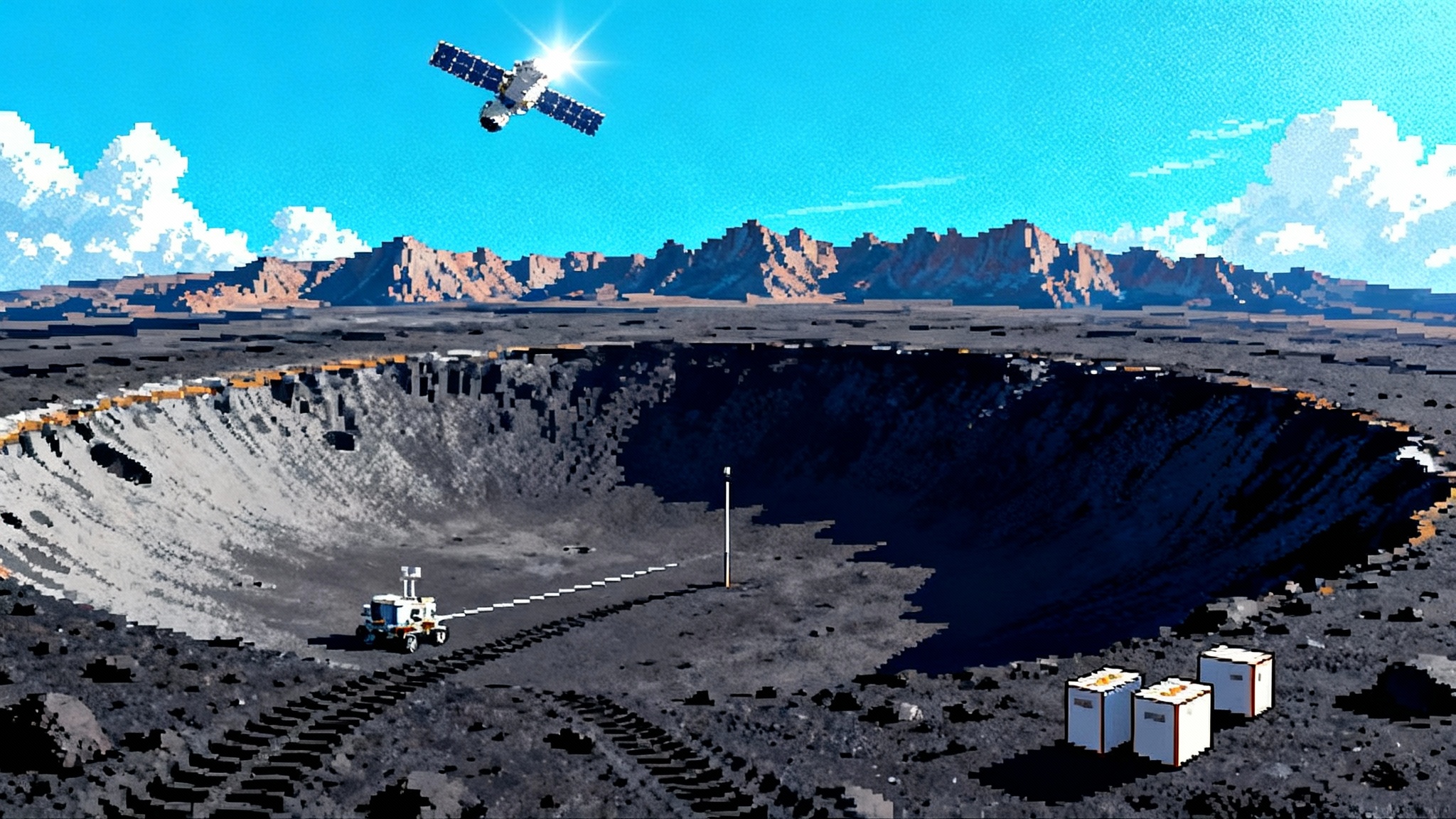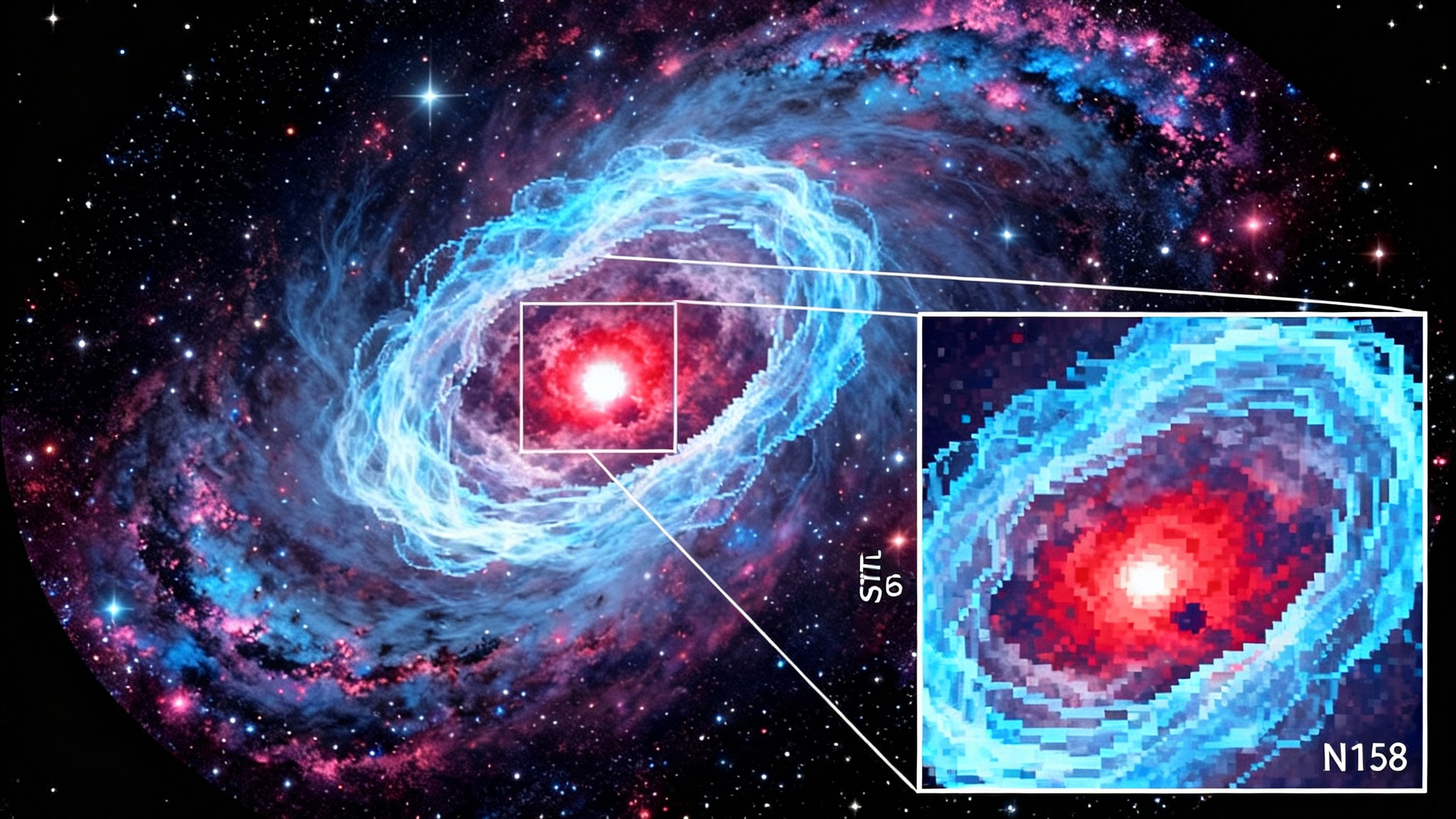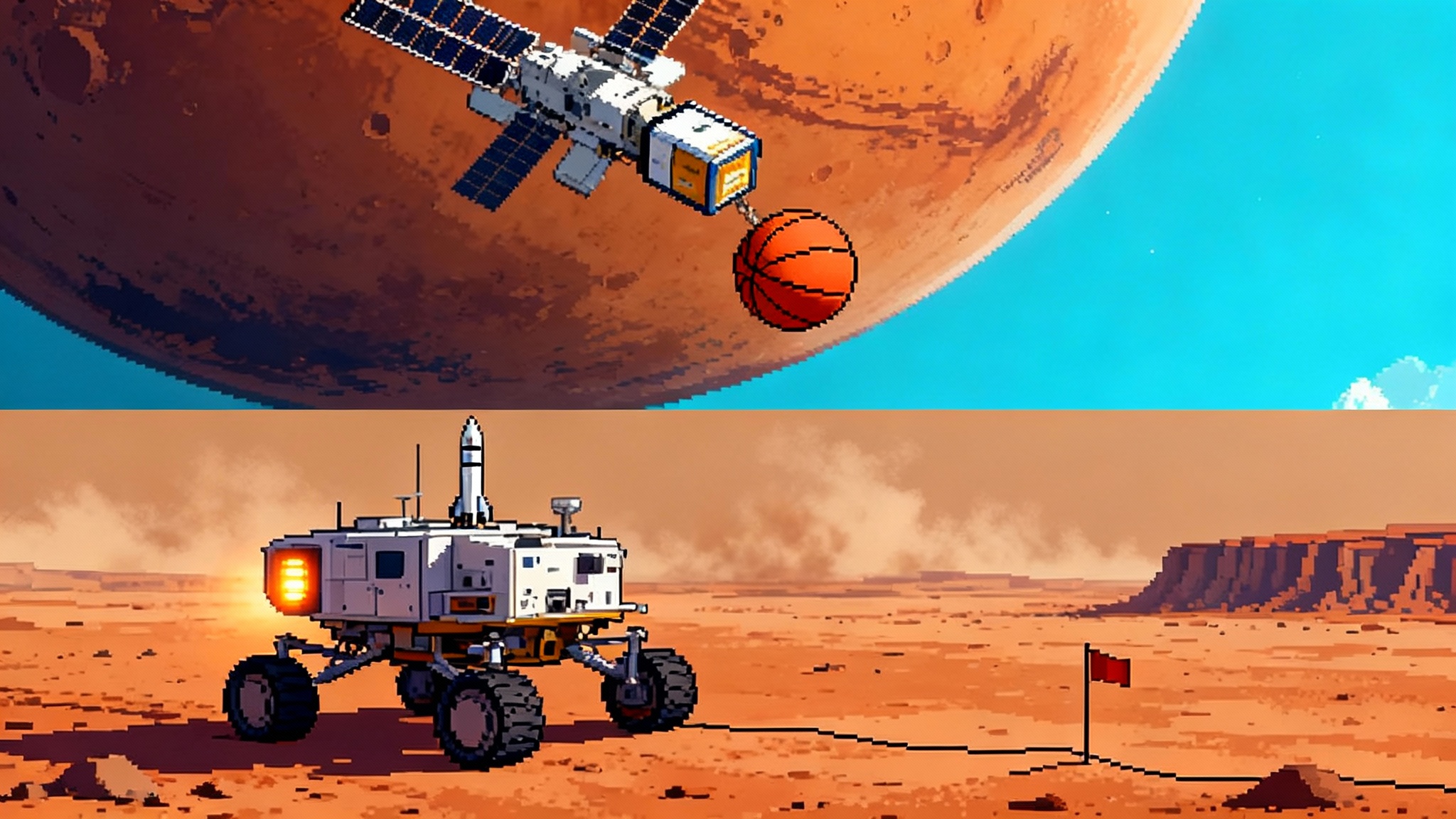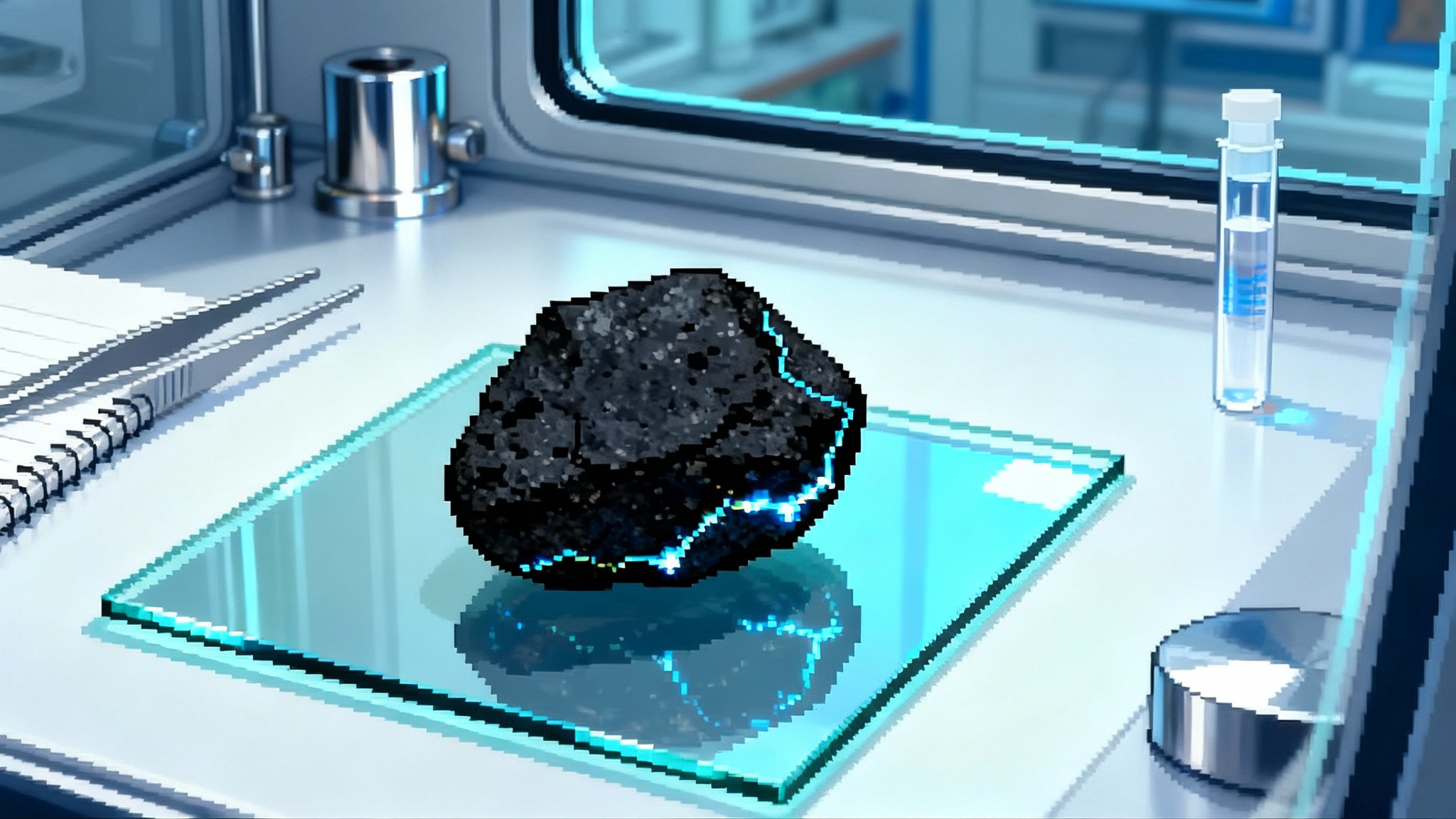Rubin’s First Images Ignite a Real Time Sky This Decade
In June 2025, the Vera C. Rubin Observatory released its first LSST images, opening a survey that will issue millions of nightly alerts. Here is how that firehose will accelerate discoveries of near‑Earth asteroids, kilonovae, and supernovae.

The night the sky began to talk back
On a clear June night in 2025, the first images from the Vera C. Rubin Observatory overview arrived like greetings from a city waking up. Pinprick lights crowded the frame, but it was the motion between exposures that changed the story. For the first time at this scale, the sky did not look still. It looked alive, and it was speaking in real time.
Rubin’s wide field camera and rapid cadence will now generate a flood of alerts every night for anything that changes position or brightness. Astronomers have planned for this moment for more than a decade, but seeing the first look made it tangible. A million or more alerts per night is no longer a forecast on a roadmap. It is a new daily reality.
This is a story about what that means. It is about how near‑Earth asteroid discovery speeds up when movement is noticed within minutes instead of days. It is about how flashes from dying stars and colliding neutron stars get caught before they fade. It is about how people who have never touched a telescope can still help steer the whole effort. And it is about the hard problems that must be solved in the background, the compute, the algorithms, and the bright satellite streaks that threaten to draw over the very canvas we are trying to read.
What a million alerts a night actually means
Think of the night sky as a busy train station. Some trains stay on the platform for hours, others race through, some get delayed, and a few appear where you did not expect them. Every few seconds, Rubin takes a fresh snapshot of that station. The alert system is the public address, calling out any change that matters. The calls include asteroids that have shifted between frames, a star that has brightened or dimmed, a galaxy with a new spark in its arm, or a streak from a satellite that should be flagged and removed.
The number sounds abstract until you break it down. Even if only a small fraction of alerts are interesting to any given team, the absolute counts are huge. If one percent are worth follow‑up for a particular science goal, that is still tens of thousands of events per night. That volume changes the tempo of discovery. Instead of a few targets that compete for attention, you get a long list that must be triaged by software before any human can even glance at it.
Rubin’s aim is not only to find things, but to find them fast. By design, alerts are built from difference images, where yesterday’s sky is subtracted from today’s to leave only the new and the moving. The goal is to package that change and broadcast it within about a minute of the exposure. Speed matters because many things in the sky fade fast. If the alert arrives while the spark is still bright, other telescopes can catch spectra and pin down what it is.
Near‑Earth asteroids: from worry to workflow
Near‑Earth asteroids live in the same neighborhood as our planet, which makes them both interesting and risky. Today’s discovery process already combines multiple surveys, but it still relies on stitching together a handful of exposures across nights to confirm a new object. Rubin will turn that sporadic search into a nightly workflow. Context from missions like the Tianwen‑2 to Kamoʻoalewa mission shows how quickly small‑body science advances when follow‑up is fast.
Here is how the acceleration happens:
- Detect early, even when the object is faint. Rubin’s large mirror and sensitive camera will spot asteroids that are smaller or further away than many current surveys can see on a routine basis.
- Link detections within the same night. The pipeline searches for pairs and triplets of detections that move with a consistent velocity. That turns single blips into candidate tracks within hours, not days.
- Publish to the community quickly. Alerts with motion vectors and brightness give follow‑up facilities a head start. Robotic telescopes can pivot the same night to secure more points along the orbit.
- Close the loop with the Minor Planet Center. The cycle from first sighting to provisional designation tightens when the first steps take minutes instead of days, aligning with Minor Planet Center NEO confirmation.
The end result is more discoveries per month and faster orbit determinations, which reduce the time an object spends on the risk list. Expect thousands of new near‑Earth objects each year as the survey reaches full stride, with a significant boost in the sub‑kilometer regime that has been under‑sampled. More important than the raw count is the shortened time from first pixel to reliable orbit. That is what turns worry into workflow for planetary defense. For small‑body context beyond discovery, see our coverage of Bennu sample insights.
Rubin will not act alone. It will complement space‑based efforts dedicated to finding the darkest, sneakiest objects that hide near the Sun’s glare, and it will build on decades of ground‑based surveys that mapped the larger population first. The combined effect pushes discovery completeness up while driving the latency down. That is the knob that matters for risk reduction, because early confirmation unlocks early planning.
Kilonovae and supernovae: catching fireworks before the smoke
Supernovae are big showy fireworks. Kilonovae are rarer, shorter, and harder to catch, more like a sparkler that burns hot and then vanishes. Both teach us about the life cycle of elements and the physics of extreme gravity. Both are temporal stories. If you arrive too late, you miss the plot.
Rubin’s cadence is designed to make arrival on time more likely. Repeated visits to the same patch of sky every few nights, combined with difference imaging and rapid alerts, let classifiers notice a rise in brightness early. That early notice is not just a luxury. Strong measurements on the rise help separate types of supernovae, improve distance estimates, and make cosmology results stronger. Over ten years, expect millions of supernova detections, with a substantial fraction caught early enough for precision follow‑up. For the cosmology backdrop, compare with Euclid dark matter maps.
Kilonovae are where the real‑time engine shows its edge. These events, triggered when neutron stars collide, fade in days, sometimes hours. Without a fast alert, they are gone. With a fast alert and well‑trained classifiers, they become findable even without a separate gravitational‑wave trigger. When gravitational‑wave observatories do provide a sky map, Rubin’s stream turns into a guided search, sweeping the right region with fresh eyes and bubbling up the most likely candidates in minutes. The catch rate rises because latency falls and the field of view is huge.
What changes once more kilonovae and fast‑rising supernovae are caught early? Heavy element formation models get constraints, cosmology gains larger and cleaner samples, and rare classes that were anecdotes become datasets. When you multiply those benefits by ten years of nights, you get a generation of graduate theses that can move from catalog building to hypothesis testing.
The citizen scientist’s seat at the console
The strongest discovery engines recruit more than professionals. They recruit pattern‑finding eyes at scale. Citizen scientists excel at the kinds of judgments that remain hard for algorithms, especially when those judgments require a quick sense of context. A spiral galaxy with a new dot near one arm. A short streak that looks like an asteroid but is actually a glint. A transient that seems too blue or too red for its class. These are calls a human can make in seconds, and a crowd can make reliably.
Rubin’s alert flood gives citizen science three new superpowers:
- Freshness. Participants can look at candidates within hours of discovery. That means human votes can still trigger same‑night follow‑ups.
- Volume. There will always be more interesting alerts than professionals can triage. A guided queue of candidates lets volunteers focus on high‑leverage tasks, like weeding out spurious detections or confirming unusual light curves.
- Feedback. When a volunteer label helps confirm a discovery, the loop can close quickly, which makes participation feel meaningful rather than symbolic.
To make this work, the interface matters. The best designs do not dump raw alerts on volunteers. They stage the tasks. One screen asks for a quick judgment about a streak. Another asks for a comparison of two light curves. A third invites a deeper dive on a single galaxy image. Each task contributes a vote that feeds back to machine learning models and to professional observing schedules.
The social effect is as valuable as the scientific one. When a parent and a teenager can jointly flag a candidate near‑Earth asteroid tracklet and see it confirmed a few days later, astronomy transforms from a distant subject into a shared activity. That is how you recruit the next generation of researchers and engineers, and the next generation of informed voters who understand why dark skies and open data matter.
The compute and AI triage that keeps the firehose drinkable
A million alerts a night is not just a number, it is a compute architecture. The path from raw pixels to actionable alerts crosses several stations. Each station introduces both power and risk.
- Image differencing at scale. Subtracting a high‑quality reference image from the new image sounds simple until you insist on doing it for every field, every clear night. Convolution, background estimation, and artifact rejection must run fast and be robust to changing conditions.
- Real‑time brokers. External services ingest alerts, attach context like prior variability, cross‑match with known catalogs, and push enriched alerts to subscribers. These brokers are the switchyards of the system. They need low‑latency streaming, horizontal scaling, and transparent failure modes so a bad night does not silently poison classifications.
- Machine learning classifiers. Models score each alert for likelihood of being an asteroid, a supernova of a given type, a variable star, or a glitch. The models need to be calibrated, monitored for drift, and trained on data that actually match the live stream. Few things are more expensive than a high‑recall, low‑precision classifier in a system where humans are the last step; you drown in false positives.
- Active learning loops. The best systems do not just classify, they learn from fresh labels. When a spectroscopic follow‑up confirms a rare type, that example should improve the model quickly. That implies a pipeline for model updates that is safe, audited, and reversible.
- Provenance and reproducibility. Every decision from an alert’s creation to its classification needs a trace. Which version of the code produced this score, which training set, which calibration file. When results go into journal papers or risk assessments, the trail must be clear.
The hardware picture is split between summit, data center, and cloud. Some steps must run near the telescope to meet latency budgets. Other steps, especially those that enrich alerts with external context, are better handled in elastic environments that can scale on demand, for example after a gravitational‑wave trigger when the community wants to tap the firehose all at once. The best practice is to budget for peak nights, test with realistic loads, and run failure drills that include losing a data center for a few hours. If the system is not resilient, the sky will be generous on exactly the night your software is not.
Two concrete actions make the triage smarter fast:
- Publish model cards and live metrics. When brokers and teams expose confusion matrices, latency distributions, and drift indicators, the community can spot problems early and share fixes.
- Share a gold set of labeled alerts. A small, carefully vetted sample that spans classes and includes hard negatives lets everyone test apples against apples. This avoids the classic problem where a model looks great on its home dataset and falls apart in the wild.
The satellite streak problem and how to blunt it
Satellites are no longer rare visitors in astronomical images. They are regular commuters. As constellations grow, streaks in wide field exposures increase, especially near twilight and dawn. Left untreated, these streaks trigger false alerts and hide real sources.
Mitigation is possible, but it requires coordination and software work.
- Predict and schedule. If you know where the brightest trains will cross, you can schedule exposures to reduce the worst conflicts, especially in the most sensitive filters. This is not perfect, but it shifts the odds in your favor.
- Mask and repair. Streak detection algorithms can flag affected pixels in real time. With careful modeling of the trail shape and brightness, pipelines can avoid promoting contaminated detections to alerts. Later processing can repair the image for static science, but the real win is keeping the false alerts out of the live stream.
- Calibrate brightness. Operators who darken satellites help everyone. When spacecraft are less reflective, their streaks are fainter and shorter, which reduces both the number and the severity of contaminated alerts. Dialogue between observatories and operators is not a nicety, it is infrastructure.
- Measure the cost. Each hour affected by streaks has a measurable impact on the number of clean alerts. Reporting that impact in transparent terms helps regulators and funders weigh policy choices on spectrum and orbits. The right data turns a debate into a decision.
Rubin will be a testbed for these tactics at scale. Success will look like a dashboard where contaminated alerts become a small, predictable fraction of the total, and like a schedule that treats streak‑heavy time windows as slots for less sensitive programs.
How this decade changes because of Rubin
When you flip the switch from snapshots to a live feed, the center of gravity moves. Discovery stops being a hunt for needles in archives and becomes a daily practice. The winners will be the teams that blend automation with judgment, and openness with coordination.
Here are the most important knock‑on effects to expect by the middle of the decade:
- Planetary defense moves from periodic campaigns to nightly cadence. More small near‑Earth asteroids are found earlier, orbits converge faster, and the list of objects with meaningful risk gets shorter. Emergency planning benefits not because the sky is safer, but because the data is faster.
- Time‑domain astrophysics expands from individual case studies to population science. Fast classification and early follow‑up turn rare events into statistics. That unlocks tests of models for stellar death, heavy element formation, and extreme gravity that were previously out of reach.
- Citizen science becomes operational. Volunteers do not just annotate after the fact; they help steer follow‑ups in time. Their labels feed models within days, which improves the next night’s triage.
- Software earns equal billing with hardware. The 3.2‑gigapixel camera is a marvel, but the lasting legacy may be the pipelines, brokers, and training datasets that other surveys adopt. When future observatories switch on, they will start with stronger software muscle memory because Rubin forced the field to build it.
What to do next, and who needs to do it
- For observatories and brokers: publish your interface contracts and keep them stable. Alert schemas, latency targets, and classification fields should not drift without clear versioning. This lowers the barrier for collaboration and reduces the risk of silent breakage.
- For satellite operators: continue brightness mitigation and provide predictive tracks with high precision. Offer transparent telemetry access during twilight hours when contamination risk is highest. The cost is small compared to the scientific return.
- For funders: invest in the boring parts of success. Storage, networking, and staffing for on‑call reliability are not glamorous, but they are what turn images into results. Set aside money for failure drills and public postmortems.
- For the research community: agree on a shared gold dataset and a rotating benchmark challenge for alert classification, with realistic class imbalance and artifact diversity. Treat it like a living standard, updated quarterly.
- For citizen science platforms: design with urgency in mind. Build triage queues that reflect real alert priority. Close the loop with acknowledgments and confirmations within days, not months. The speed of feedback is the fuel of participation.
The live sky is here. The work is ours.
The first images from Rubin in June 2025 were a promise and a pressure test. They promised a decade where the sky speaks in minutes and not in months. They also reminded us that listening at that speed takes preparation and care. The million‑alert nights are not a storm to survive, they are a river to steer. If we build the right channels, the current will carry near‑Earth asteroids from risk to routine, turn kilonovae and supernovae into daily science, and invite millions of people to help read the night in real time.
The live sky is not a spectacle; it is a system we can improve. That is the breakthrough hidden inside the first pictures. The camera is ready. Now it is our turn to keep up.








